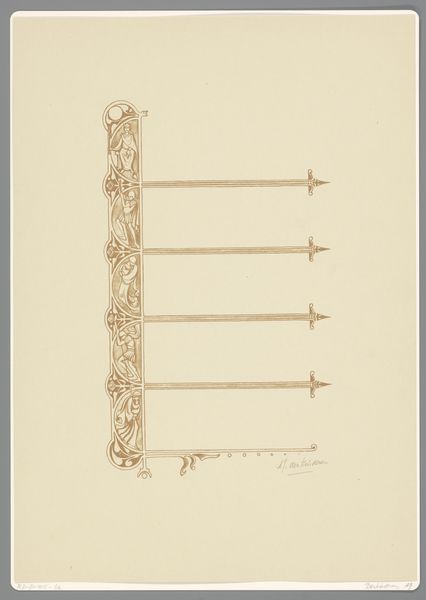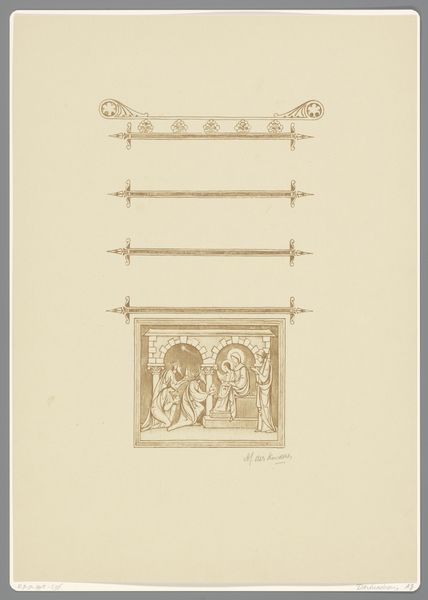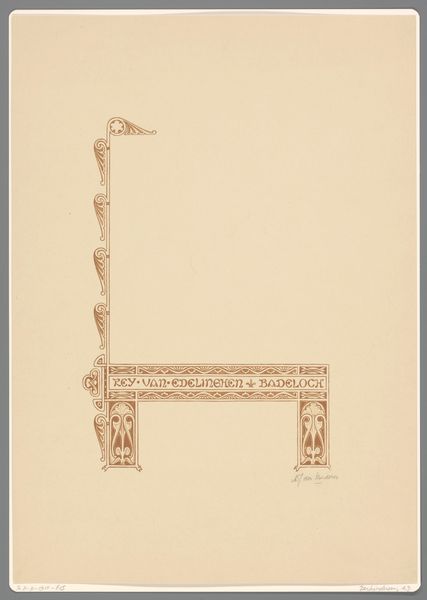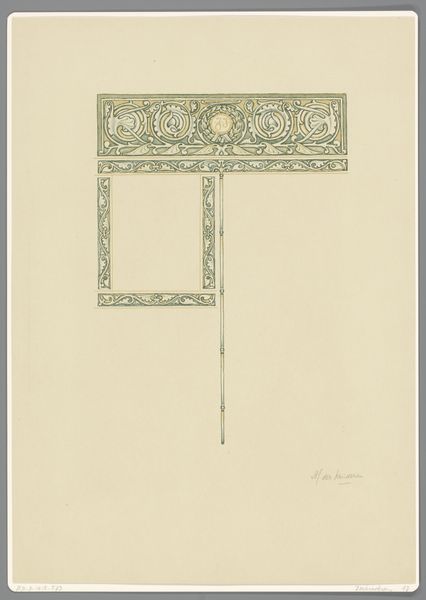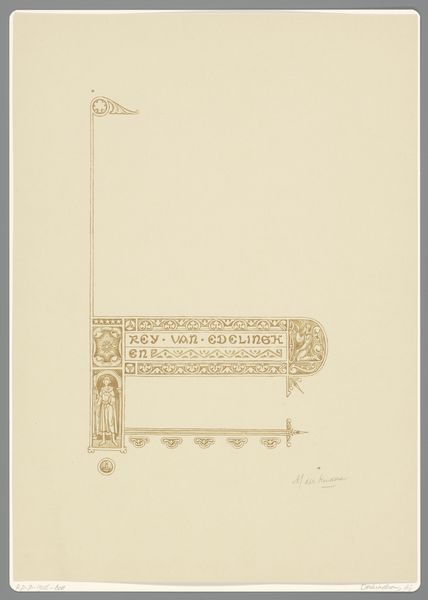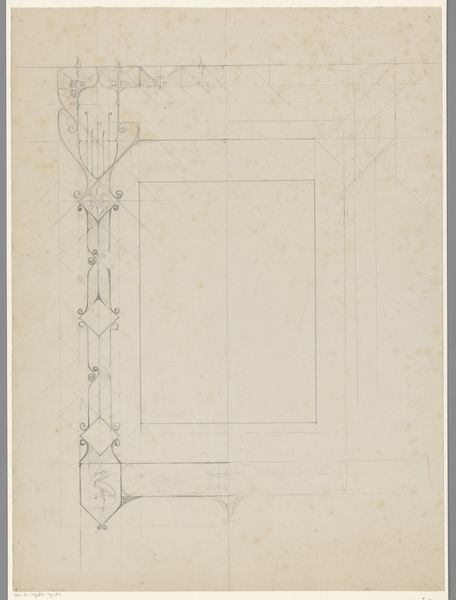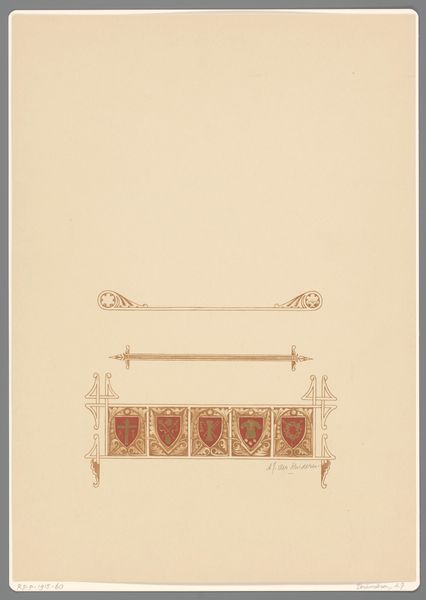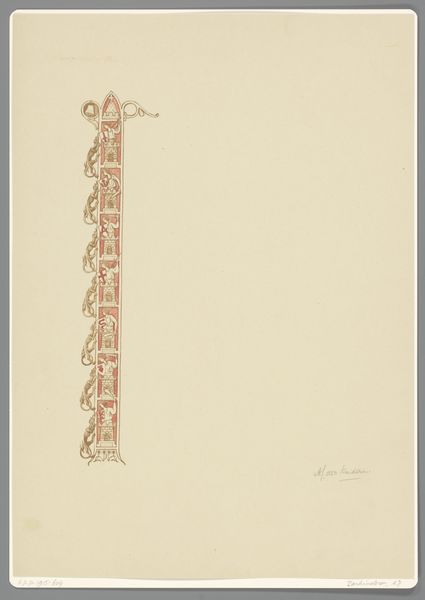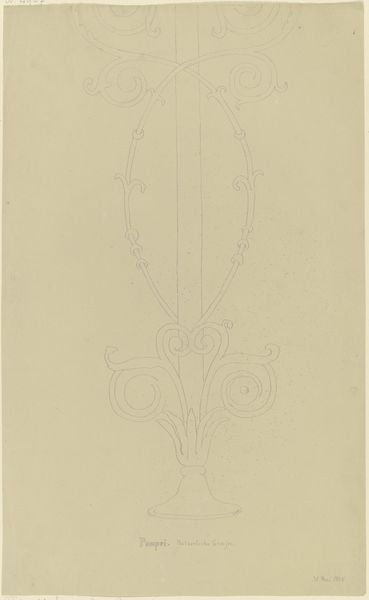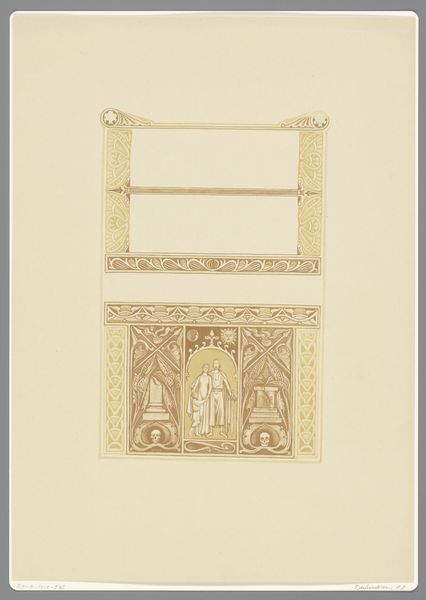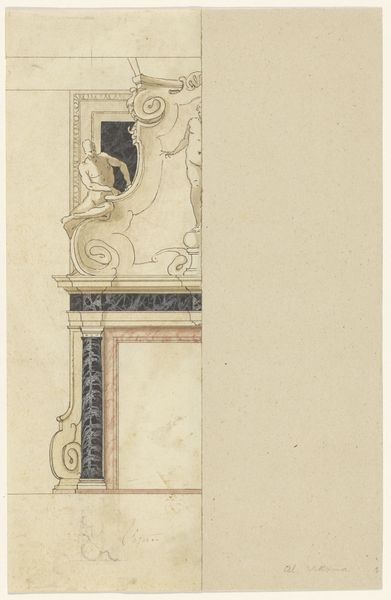
drawing, graphic-art, print
#
drawing
#
graphic-art
#
historical design
#
art-nouveau
#
pale palette
# print
#
old engraving style
#
geometric
#
line
#
symbolism
#
decorative-art
Dimensions: height 414 mm, width 295 mm
Copyright: Rijks Museum: Open Domain
Editor: This is "Rey van klaerissen," a drawing and print made between 1894 and 1901 by Antoon Derkinderen. It strikes me as incredibly formal, almost like a medieval manuscript illustration but with art nouveau sensibilities. What can you tell me about its historical context and purpose? Curator: This piece is fascinating as it sits at the intersection of artistic trends and societal shifts. Derkinderen, active during the rise of art nouveau and a revival of interest in medieval aesthetics, produced this in a period where the public function of art was being hotly debated. It evokes both religious tradition and burgeoning nationalist sentiment. Considering the title, what visual elements strike you as reinforcing this idea of “Rey van Klaerissen,” meaning roughly, “The Reign of the Clarisses?” Editor: The figures of the Clarisse nuns and what looks like a Chi Rho symbol seem like obvious visual clues. What about the swords? Their presence seems disconnected. Curator: Exactly. But this apparent disconnect reveals something crucial. Swords, symbols of power and chivalry, weren't commonly associated with a monastic order focused on poverty and contemplation. By juxtaposing these martial symbols with religious imagery, Derkinderen taps into the contemporary anxieties surrounding the role of religious institutions and, perhaps, the perceived need to defend tradition in a rapidly modernizing world. Does this imagery remind you of other pieces of art or architecture of the period? Editor: It does. It seems comparable to the symbolic integration found in some Gothic Revivalist architectural ornamentation, but with a bit more of a nationalist overtone. Curator: Precisely. This reinforces the socio-political context – where art became a battleground for defining national and religious identity. Understanding this gives us greater insights into both the piece and the era that produced it. Editor: Thanks for helping me contextualize it! I feel like I understand its societal relevance much better now.
Comments
No comments
Be the first to comment and join the conversation on the ultimate creative platform.
